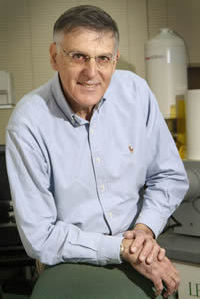
The 1982 breakthrough fundamentally changed the way chemists look at solid matter, the Royal Swedish Academy of Sciences said.
Scientists used to believe that atoms were arranged inside crystals only in ordered, repeating patterns, Shechtman's work showed that the atoms could be packed in a pattern that did not repeat – a new chemical structure known as a quasicrystal.
NPR's Joe Palca said Shechtman was in the U.S. studying a mixture of aluminum and manganese through an electron microscope when he made the discovery. The microscope allowed him to see how the atoms in the compound were packed together – but the pattern didn't make sense because it seemed to violate the rules of nature by not repeating.
"This was such a fundamental change in what people understood about crystals that it just seemed impossible," Palca said. "So he sent in a paper to a scientific journal, and they basically sent it right back without even ... looking at it at all. But he knew he had something very weird."
All crystals were thought to have rotational symmetry, so that when they are rotated, they look the same. On April 8, 1982, Shechtman first observed crystals with 10 points — pentagonal symmetry, which most scientists said was impossible.
No comments:
Post a Comment